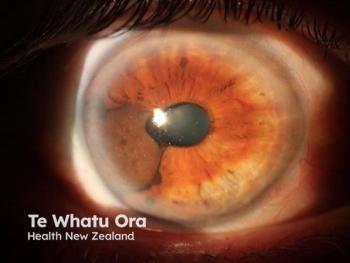
Monkeypox outbreak lessons: More awareness, funding needed
National report - Present concerns about the spread of avian flu are a reminder that two years ago in the Midwest, another animal-carried virus - monkeypox - at least momentarily threatened to spread to more areas and infect more victims.
One of the physicians involved in the initial response to the short-lived spread of monkeypox in 2003 says that though it didn't reach epidemic proportions then, the threat for it to do so was there - and still is.
John W. Melski, M.D., a dermatologist and medical director of clinical informatics at the Marshfield Clinic in Marshfield, Wis., says one of the problems - and one of the ironies - that occur when a viral outbreak happens is that, while it may grab the headlines initially, awareness dwindles as the outbreak is successfully combated. Such was the case with the brief monkeypox episode of May-June 2003.
Spreading the disease
The disease was first reported in humans in 1970.
Humans can contract monkeypox if they are bitten by an infected animal or if they touch that animal's blood, body fluid or rash. It can spread from person to person through respiratory droplets during long periods of face-to-face contact, by exposure to an infected person's body fluids or even by touching clothing or bedding infected by the virus.
In humans, symptoms are similar to, but usually milder than, those of smallpox. A major difference is that unlike smallpox, monkeypox causes swelling of the lymph nodes. About 12 days after contracting the monkeypox virus, victims will experience fatigue, headaches, fever, muscle aches and back aches. A rash will develop anywhere from one to three days - in some cases, slightly longer - after the fever begins. The rash, which often starts on the face but can start elsewhere, turns into fluid-filled bumps that spread to other parts of the body and eventually crust, scab over and fall off. The disease usually lasts two to four weeks.
Risk, treatment
In Africa, monkeypox has killed between 1 percent and 10 percent of people who contract it, according to Centers for Disease Control (CDC) statistics.
The risk, the CDC adds, is probably lower in the United States, where nutrition and access to medical care are better. The CDC also says that while there is no specific treatment for monkeypox, people in Africa who were vaccinated against smallpox ran a lower risk of getting monkeypox, and the agency has published guidelines on when the vaccine should be used to protect against monkeypox.
Monkeypox origination
Dr. Melski says the 2003 monkeypox episode originated when an infected Gambian rat bit a prairie dog at a pet-swap meet in Waussau, Wis. A family purchased the prairie dog, which later bit a female child, and the disease spread to other family members. The girl was treated at the Marshfield Clinic, as were, eventually, other family members and patients. Dr. Melski says when he first treated the girl, he remembered that similar illnesses were occurring in Milwaukee. His group notified state public health officials, biopsy tissue was sent to the CDC, and the CDC verified that the disease was monkeypox.
"When I first saw the little girl who was the index case, I was reminded of the other cases in Milwaukee, and that was information gathered by the state public-health office," Dr. Melski says. "That was the point where I learned the importance of the resources that public health offices have to offer to the medical community."
Newsletter
Like what you’re reading? Subscribe to Dermatology Times for weekly updates on therapies, innovations, and real-world practice tips.


















